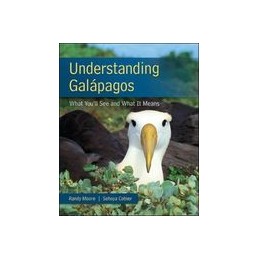- Reduced price

Order to parcel locker

easy pay


 Delivery policy
Delivery policy
Choose Paczkomat Inpost, Orlen Paczka, DHL, DPD or Poczta Polska. Click for more details
 Security policy
Security policy
Pay with a quick bank transfer, payment card or cash on delivery. Click for more details
 Return policy
Return policy
If you are a consumer, you can return the goods within 14 days. Click for more details
In this book, you will find discussions (and checklists) of the native and endemic organisms youllsee, especially the iconic ones such as penguins, land and marine iguanas, finches, giant tortoises,and albatrosses (see color images). However, we have not described all of the organisms on theislands-after all, there are more than 600 species of lichens and 2,9OO species of marine organisms,not to mention the more than 50 families, 300 genera, and 370 species of endemic and nativebeetles. Similarly, we discuss many, but not all, of the most troublesome introduced species (at lastcount, there were more than 1,400 such species). We have focused on the native and endemic starsof Galápagos that fill tourists must-see lists.
Although our book emphasizes evolution, we have also addressed several other topics, for evolutioncannot be understood without a corresponding understanding of its context:: namely, the geology,climate, and historical impact of humans on the ecosystem. This is why you will find discussions of theislands geology, weather, trails, and Visitor Sites in this book.
We also wrote this book to emphasize the importance of preserving Galápagos, as well as to helpreaders understand the challenges facing the islands.
To ensure accuracy and consistency, the information in this book was derived from visiting theislands more than 30 times over many years; talking with numerous Galápagos National Park Serviceguides, boat captains, boat crews, school teachers and other residents of Galápagos, and former prisonersat the Wall of Tears penal colony; documenting the GPS coordinates of more than 350 sites,usually with two independent GNPS units (Appendix 1); studying documents at a variety of libraries,research stations, and related locations such as GNPS, Charles Darwin Research Station, NationalGeospatial Intelligence Agency, and Instituto Oceanografico de la Armada; being on the bridge withboat captains in the most challenging conditions and regions of the islands (Appendix 2); and, whennecessary, hiking, scuba diving, and interviewing local residents to resolve controversies (e.g., theexact location of Jessica; see Chapter 11).
Data sheet
